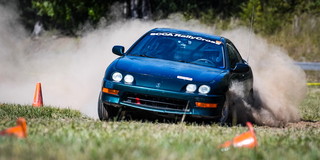
The race season is rapidly approaching and in some areas it’s already begun. If you haven’t already, now is the time to start re-prep on your car to make sure it’s safe and ready for the upcoming race season!
What is re-prep? Re-prep is preparing your car for the next event, checking it over to make sure there are no damaged or worn out parts since the last race. Pushing a car to its limits puts extra strain on components wearing them out sooner and fatiguing them to the point of failure much sooner than normal operation, such as street driving. When pushing these components to their limits, they need to be inspected and replaced more frequently to prevent them from failing on race day.
Your re-prep regime will differ depending on your level of competition, and what the car is generally used for. A daily driver will generally get oil and filter changes, break inspections, etc. as routine maintenance from daily use where as a dedicated race car will get attention before and after each event. Regardless of your car’s general use, what follows are some things to inspect prior to taking your car out on course.
Make sure the interior is clean and free of any loose items. That energy drink can that rolled under the seat, the fuzzy dice hanging from the rear view and the CD’s in the door pocket can all become projectiles once the car starts bouncing down the course. It’s also good to remove any items from the glovebox and center console incase the lids fly open during competition. Don’t forget to make sure there are no loose items in the trunk. It’s best to remove stuff like the spare tire, jack and lug wrench all together as these are the only weight reduction items allowed in Stock and Prepared classes. If you do this at home, you save the trouble of making a pile in paddock. Lastly, make sure anything in the car is secure. Cell phones need to be positively locked into a dash or window mount; that magnetic mount won’t cut it once the starter gives you the signal to “GO!”
Make sure the engine and transmission are sound and have fresh fluids. If your daily driver is pulling double duty, the fluids and filters probably get changed regularly anyway. If it’s a dedicated race car, the beginning of the season is a great time to start off with a fresh fluid and filter change. Check your coolant levels as well as brake, clutch and power steering fluid levels. Make sure everything under the hood is secure, particularly the battery and its cover. If your battery doesn’t have a cover, make sure there is a cover over the positive terminal. Check for smooth throttle operation and that it freely returns to the idle position.
Next, put the car on jack stands. Inspect the tires for sufficient tread and any foreign matter such as rocks, screws or nails before setting tire pressures. Check the wheel bearings to make sure they have no play and roll smooth. Remove the wheels and check the brake pads and rotors for wear, cracks or heat marks. Also check the brake lines for any abrasions, bulges or cracks. Inspect suspension components for any bends or cracks. Check the suspension bushings for damage and play. Look for any fluid leaks throughout the underside of the car. Anything from an oil to fuel leak may cause major difficulties on race day. Take a look for any jammed debris such as sticks, rocks, chunks of dirt or cones you may have picked up at your last event. Grab some wrenches and inspect all the suspension, engine and transmission nuts and bolts to make sure none have come loose. Check the drive shafts and axle shafts for any play. Make sure steering links aren’t cracked, bent or broken and that ball joints and end links have no play. Grease all components with grease fittings.
This is not a fully comprehensive list. Depending on your car, there may be other items that need attention as well. It’s a good idea to put together a checklist of things to check before each event. Give yourself some time between your re-prep and next event. If you find an issue Friday night, you may be in a bind to find replacement parts before Saturday morning.
On race day, do a final check of things like tire pressures, fluid levels and any loose items in the car. With some prep, you should have no issues passing tech inspection. Give the windows a wash before racing starts and you’ll be as prepared as possible. It’s a good idea to give the car a look-over between runs when possible. An issue may be developing that you can’t feel yet. While no amount of re-prep will eliminate all possibilities of a failure, making sure your car is in tip top shape will reduce the chances of a DNF and increase the chances of a great time on race day!
Words by Geoff Thomas
Photo by Perry Bennett










